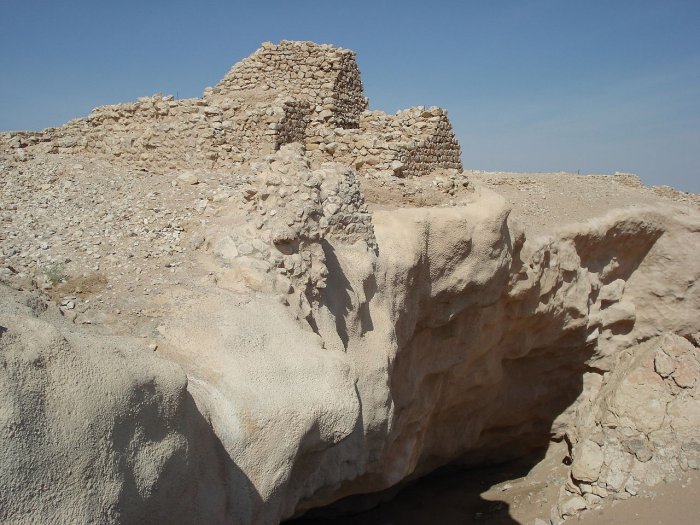Quest For Atlantis Of The Sands – Iram Of The Pillars – A Legendary Lost City
A. Sutherland - AncientPages.com - Most people associate Atlantis with an underwater city or continent long gone.
However, Arabia has its legend of a lost city, the so-called "Atlantis of the Sands," which has been the source of debate among many historians, archaeologists, and explorers. The existence of this legendary place remains a controversial subject to this day.
Ubar's ruins - Image credit: 9591353082 - CC BY 2.5
Over the years, various names have been given to this lost city, the most common being Ubar, Wabar, and Iram of the Pillars. The archaeological site is dated to a time which would make it contemporary to when the people of Ad would have lived according to the evidence provided by Quran exegetes.
According to most legends and myths, the Atlantis of the Sands is located somewhere in the Rub' al Khali desert, also known as the Empty Quarter. It covers most of the southern third of the Arabian Peninsula, including most of Saudi Arabia and areas of Oman, the United Arab Emirates, and Yemen.
Several explorers have tried to determine the lost city's actual location. One of them was Bertram Thomas (1892-1950). One of his Bedouin escorts told him the story of a lost city whose wicked people had attracted the wrath of God and had been destroyed.
Thomas later related the story to T.E. Lawrence ("Lawrence of Arabia"), who regarded Ubar as the "Atlantis of the Sands." Lawrence became fascinated with the lost city of the sands and kept looking for it, but he never found it. He found no trace of a lost city in the sands. Since then, many other explorers have attempted to locate the city beneath the sand.
In 1992 The New York Times published an article announcing the Atlantis of the Sands had been discovered by a Los Angeles-based team of amateur and professional archaeologists.
"Using a combination of high-tech satellite imagery and old-fashioned literary detective work, they discovered the fortress city buried under the shifting sands of a section of Oman so barren that it is known as the Rub' al Khali or Empty Quarter.
A sketch showing what the city Iram of Pillars. Image source
Built 5,000 years ago, Ubar was a processing and shipping center for frankincense, an aromatic resin that grew in the nearby Qara Mountains. It was used in cremations and religious ceremonies, as well as in perfumes and medicines; frankincense was as valuable as gold.
Ubar's rulers became wealthy and powerful, and its residents--according to Islamic legend--so wicked and debauched that eventually, God destroyed the city, allowing it to be swallowed up by the wild desert.
Lawrence, better known as Lawrence of Arabia, called it "the Atlantis of the sands" and, like the undersea Atlantis, many scholars doubted that Ubar ever existed," Los Angeles Times reports.
Researchers said they "documented how the city fell, and that it did not appear to be by divine retribution for wickedness. In building his "imitation of paradise," the legendary King Shaddad ibn 'Ad unknowingly constructed it over a large limestone cavern. Ultimately, the weight of the city caused the cavern to collapse into a massive sinkhole. It destroyed much of the town, causing the rest to be finally abandoned.
The researchers also discovered the remains of a nearby neolithic village that may date to at least 6000 B. C."
"The discoveries are expected to shed considerable light on the early history of the region, which has been shrouded in myth, said George Hedges, 39, a Los Angeles lawyer who, with 53-year-old filmmaker Nicholas Clapp was one of the leaders of the expedition. Among the region's mysteries, the findings may help resolve, for example, whether the Queen of Sheba, who would have been contemporaneous with Ubar, existed.
The researchers have already found evidence that the climate was much different then. The neolithic village was located on the banks of a river--long since dried up--and its residents farmed a substantial area.
Even in the time of Ubar, 3,000 years after the neolithic village, rainfall was more plentiful, and the well-supplied large quantities of water were enough to support not only the city but also the camel caravans that traversed the forbidding desert.
Clapp persuaded JPL scientists Charles Elachi and Ronald Blom to scan the region with a unique shuttle radar system flown on the Challenger's last successful mission. The radar could "see" through the overlying sand and loose soil to pick out subsurface geological features.
Using the imagery, the team picked out the ancient trade routes, which were packed down into hard surfaces by the passage of hundreds of thousands of camels. Junctions, where the trade routes converged or branched, seemed likely locations for the lost city.
Satellite photograph of South Arabia showing hypothetical locations of lost cities. Derivative work, credit: Shaibalahmar - Public Domain
Armed with this information, they enlisted archeologist Juris Zarins of Southwest Missouri State University and British explorer Sir Ranulf Fiennes, who had served with the British military in the deserts of Oman and fought with the sultan's forces.
The team made a brief, preliminary expedition to Oman last summer, searching about 35 sites. They found shards of pottery and other evidence of the trade routes, but nothing to show they had definitively found the city."
Still, many feel this intriguing question remains unanswered:
"Is the city of Ubar identical to Iram of the Pillars or is the legendary lost city still buried beneath the sand?"
Over the years, various names have been given to this lost city, the most common being Ubar, Wabar, and Iram of the Pillars. According to most legends and myths, the Atlantis of the Sands is located somewhere in the Rub' al Khali desert, also known as the Empty-quarter. This covers most of the southern third of the Arabian Peninsula, including most of Saudi Arabia and areas of Oman, the United Arab Emirates, and Yemen.
Several explorers have tried to determine the lost city's true location. One of them was Bertram Thomas (1892-1950). One of his Bedouin escorts told him the story of a lost city whose wicked people had attracted the wrath of God and had been destroyed.
He found no trace of a lost city in the sands. Thomas later related the story to T.E. Lawrence ("Lawrence of Arabia"), who regarded Ubar as the "Atlantis of the Sands". Lawrence became fascinated with the lost city of the sands and kept looking for it, but he never found it either. Since then many other explorers attempted to locate the city buried beneath the sand.
In 1992 The New York Times published an article announcing the Atlantis of the Sands has been discovered by a Los Angeles-based team of amateur and professional archaeologists.
"Using a combination of high-tech satellite imagery and old-fashioned literary detective work, they discovered the fortress city buried under the shifting sands of a section of Oman so barren that it is known as the Rub'al Khali or Empty Quarter. When they started digging at Shis'r, near an old Arab fort, they began to uncover a large ancient structure. No one was sure what it was..."
Some explorers theorized the remains of the old fort at Shisr could be the rests of the Iram of the Pillars.
Built nearly 5,000 years ago, Ubar was a processing and shipping center for frankincense, an aromatic resin has grown in the nearby Qara Mountains. It was used in cremations and religious ceremonies, as well as in perfumes and medicines, frankincense was as valuable as gold. Ubar's rulers became wealthy and powerful,
A legend says that the city's residents became ao wicked and debauched that God destroyed the city, allowing it to be swallowed up by the restless desert.
There is also another explanation. Researchers "documented how the city fell, and that it did not appear to be by divine retribution for wickedness. In building his "imitation of paradise," the legendary King Shaddad ibn 'Ad unknowingly constructed it over a large limestone cavern. Ultimately, the weight of the city caused the cavern to collapse in a massive sinkhole. Most of it was destroyed and the rest was abandoned.
Such discoveries possibly can shed some light on the early history of the region, which has been shrouded in myth, according to George Hedges, a Los Angeles lawyer who with 53-year-old filmmaker Nicholas Clapp was one of the leaders of the expedition. Among the mysteries of the region the findings may help resolve, for example, is whether the Queen of Sheba, who would have been contemporaneous with Ubar, really existed.
The researchers have already found evidence that the climate was much different at that time. The neolithic village was apparently located on the banks of a river--long since dried up--and its residents farmed a substantial area.
Even in the time of Ubar, 3,000 years after the neolithic village, rainfall was more plentiful and the well supplied quite large quantities of water, enough to support not only the city itself but also the camel caravans that traversed the forbidding desert.
Clapp persuaded JPL scientists Charles Elachi and Ronald Blom to scan the region with a special shuttle radar system that was flown on the last successful mission of Challenger. The radar was able to "see" through the overlying sand and loose soil to pick out subsurface geological features.
A brief, preliminary expedition to Oman did not find much, only shards of pottery fragments, and other evidence of the trade routes. but no traces of a legendary city.
"Is the city of Ubar identical to Iram of the Pillars or is the legendary lost city still buried somewhere beneath the sand?" Nobody knows.
Updated on July 26, 2022
Written by – A. Sutherland AncientPages.com Senior Staff Writer
Copyright © AncientPages.com All rights reserved. This material may not be published, broadcast, rewritten or redistributed in whole or part without the express written permission of AncientPages.com
Expand for referencesNicholas Clapp - The Road to Ubar: Finding the Atlantis of the Sands
Ranulph Fiennes - Atlantis of the Sands – The Search for the Lost City of Ubar
More From Ancient Pages
-
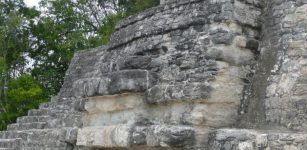 Ancient Maya Destroyed Their Environment 2,000 Years Ago – Effects Are Still Visible Today
Civilizations | Sep 9, 2015
Ancient Maya Destroyed Their Environment 2,000 Years Ago – Effects Are Still Visible Today
Civilizations | Sep 9, 2015 -
 Mysterious Advanced Underground Civilization And A Secret Society – Dangerous Knowledge And Verdict – Part 3
Ancient Mysteries | Apr 24, 2018
Mysterious Advanced Underground Civilization And A Secret Society – Dangerous Knowledge And Verdict – Part 3
Ancient Mysteries | Apr 24, 2018 -
 Meenakshi Temple Of Madurai Is Among Most Powerful Sacred Sites For Hindu People
Featured Stories | Apr 29, 2021
Meenakshi Temple Of Madurai Is Among Most Powerful Sacred Sites For Hindu People
Featured Stories | Apr 29, 2021 -
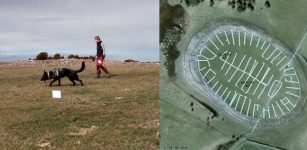 Fabel: World’s First Archaeology Dog Helps To Unravel The Mystery Of Sandby Borg
Archaeology | May 10, 2016
Fabel: World’s First Archaeology Dog Helps To Unravel The Mystery Of Sandby Borg
Archaeology | May 10, 2016 -
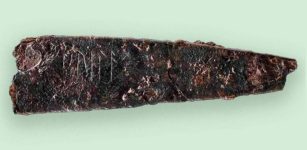 2,000-Year-Old Knife With Denmark’s Oldest Runes Found On Funen
Artifacts | Jan 22, 2024
2,000-Year-Old Knife With Denmark’s Oldest Runes Found On Funen
Artifacts | Jan 22, 2024 -
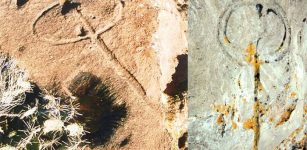 Puzzling Water Glyphs Of The American Southwest – Ancient Astronomical Symbols, Directional Signs Or Something Else?
Featured Stories | Apr 15, 2023
Puzzling Water Glyphs Of The American Southwest – Ancient Astronomical Symbols, Directional Signs Or Something Else?
Featured Stories | Apr 15, 2023 -
 Knowledge Of Divine Alien Beings And High-Tech In Ancient Egypt Described In Sacred Books And Papyrus – Reincarnation, Cloaking Technology And Space Travel – Part 2
Ancient Mysteries | May 16, 2021
Knowledge Of Divine Alien Beings And High-Tech In Ancient Egypt Described In Sacred Books And Papyrus – Reincarnation, Cloaking Technology And Space Travel – Part 2
Ancient Mysteries | May 16, 2021 -
 On This Day In History: Vädersol Painting Depicting ‘Sun Dog’ Phenomenon Observed Over Stockholm – On Apr 20, 1535
News | Apr 20, 2016
On This Day In History: Vädersol Painting Depicting ‘Sun Dog’ Phenomenon Observed Over Stockholm – On Apr 20, 1535
News | Apr 20, 2016 -
 Stonehenge’s Monumental Altar Stone Came From Scotland – Not Wales As Previously Thought
Archaeology | Aug 16, 2024
Stonehenge’s Monumental Altar Stone Came From Scotland – Not Wales As Previously Thought
Archaeology | Aug 16, 2024 -
 Queen Teuta: Power-Hungry Villain Who Underestimated The Romans
Featured Stories | Oct 31, 2019
Queen Teuta: Power-Hungry Villain Who Underestimated The Romans
Featured Stories | Oct 31, 2019 -
 Ancient Mysteries Of Wisconsin – Great Forgotten Prehistoric Events Shed New Light On History Of North America
Ancient Mysteries | Jan 11, 2019
Ancient Mysteries Of Wisconsin – Great Forgotten Prehistoric Events Shed New Light On History Of North America
Ancient Mysteries | Jan 11, 2019 -
 On This Day In History: King Louis XVI Was Executed By Guillotine In Paris – On Jan 21, 1793
News | Jan 21, 2017
On This Day In History: King Louis XVI Was Executed By Guillotine In Paris – On Jan 21, 1793
News | Jan 21, 2017 -
 Mysterious Jawbone May Represent Earliest Presence Of Humans In Europe
Archaeology | Dec 7, 2022
Mysterious Jawbone May Represent Earliest Presence Of Humans In Europe
Archaeology | Dec 7, 2022 -
 Death And Afterlife In Ancient Egyptian Beliefs – Death As Transition To Another Reality
Featured Stories | May 28, 2018
Death And Afterlife In Ancient Egyptian Beliefs – Death As Transition To Another Reality
Featured Stories | May 28, 2018 -
 At Least 20 Ancient Colored Wooden Coffins Discovered In Asasif Necropolis, Luxor
Archaeology | Oct 15, 2019
At Least 20 Ancient Colored Wooden Coffins Discovered In Asasif Necropolis, Luxor
Archaeology | Oct 15, 2019 -
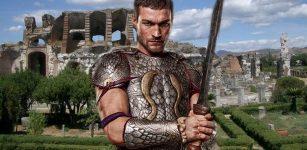 Perfectly Preserved Roman Tombs Discovered Near City Of Capua Where Spartacus Trained As Gladiator
Archaeology | Jan 7, 2021
Perfectly Preserved Roman Tombs Discovered Near City Of Capua Where Spartacus Trained As Gladiator
Archaeology | Jan 7, 2021 -
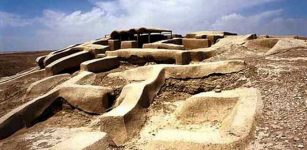 The Burnt City And Its Mysterious Prehistoric Inhabitants
Civilizations | Nov 17, 2014
The Burnt City And Its Mysterious Prehistoric Inhabitants
Civilizations | Nov 17, 2014 -
 Immigrants In Prehispanic Cancun Were Treated Just Like Maya Locals
Archaeology | Oct 26, 2023
Immigrants In Prehispanic Cancun Were Treated Just Like Maya Locals
Archaeology | Oct 26, 2023 -
 Are Priceless Ancient Gold Tablets Of The Serpent People Hidden Underground In Los Angeles?
Ancient Mysteries | May 24, 2014
Are Priceless Ancient Gold Tablets Of The Serpent People Hidden Underground In Los Angeles?
Ancient Mysteries | May 24, 2014 -
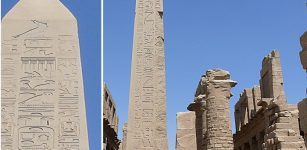 Unknown History Of Gigantic Obelisks Created With Ancient Lost Technology
Ancient Mysteries | Oct 8, 2017
Unknown History Of Gigantic Obelisks Created With Ancient Lost Technology
Ancient Mysteries | Oct 8, 2017

